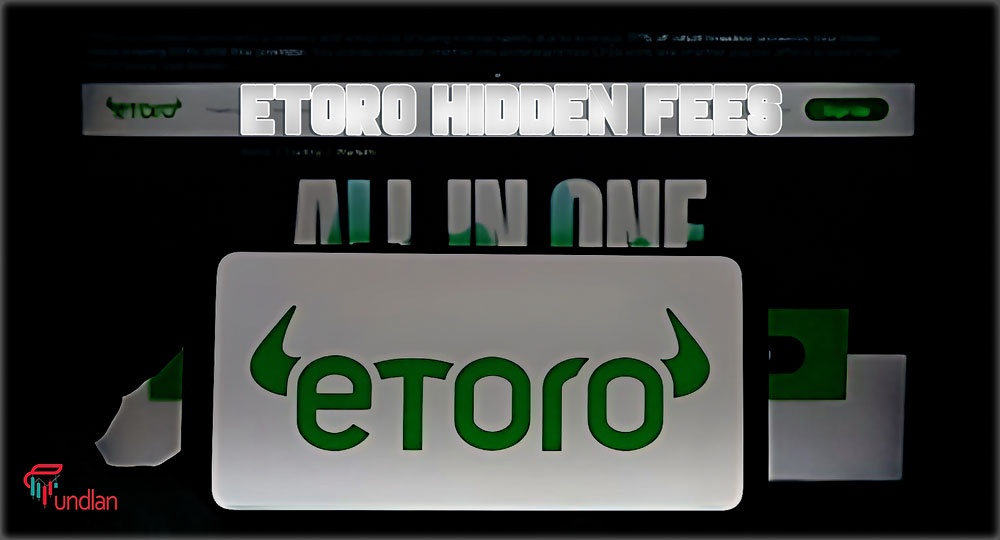The well-known online trading site eToro does charge inactivity fees. These eToro inactivity fees apply if an account is inactive for a period that exceeds a year.
It is important to remember that the specific charges and requirements may change, so checking their official terms and conditions for the most up-to-date information
is recommended.
Moving cryptocurrency into and out of your eToro wallet may also incur fees. It is essential to keep up with these fees to manage your eToro account efficiently.
So, are you ready to be with us to find the answer to the “Does eToro Have Inactivity Fees?” question?
What is the best explanation for eToro fees?
eToro stands out as a user-friendly platform with its fee structure.
In this guide, we’ll unravel the complexities of eToro fees, shedding light on the often-discussed topics of eToro wallet fees and eToro inactivity fees:
1. eToro wallet fees
eToro wallet fees are associated with the use of their built-in cryptocurrency wallet. You can transfer cryptocurrency purchases or sales made on eToro to your eToro wallet for added security.
However, this ease comes at a price. For sending bitcoins to and from your eToro wallet, there are fees. The type and quantity of cryptocurrency being transferred can affect the fees; thus, referring to eToro’s pricing schedule for exact information is crucial.
2. eToro inactivity fees
eToro inactivity fees are another aspect of the fee structure that traders should be aware of. If your eToro account remains dormant for one year or more, eToro may charge inactivity fees.
This fee is designed to encourage active trading and account management. To dodge these expenses, keep in mind to log in and connect frequently with your eToro account after you are not effectively exchanging.
Continuously check the official eToro Charge Plan to remain educated on the most recent expenses and terms to guarantee you’ll oversee your eToro account beneficially.
What is the best explanation for eToro hidden fees?

eToro is generally transparent about its fees, but it is crucial to know hidden costs like spread, conversion, and withdrawal fees.
In the following, we want to explore less obvious fees that might affect your trading experience beyond the well-discussed eToro wallet fees (wallets that accept PayPal) and eToro inactivity fees:
· Spread costs
You are exposed to spread charges whether you trade CFDs (Contracts for Difference) or non-commission equities on the platform.
The spread, which is the difference between an asset’s purchasing and selling prices, is the main source of income for eToro.
Although spreads aren’t technically a hidden fee, controlling your trading costs successfully depends on your ability to comprehend how they operate and how they affect your trades.
Crypto exchanges that accept PayPal
· Conversion fees
Multiple currencies are available for trading on eToro, which is helpful for international traders.
However, eToro may charge conversion costs if you deposit money in a currency other than the one that serves as the foundation currency for your trading account.
When managing your account, you should consider how these fees might impact your trading capital.
· Withdrawal fees
While eToro does not charge deposit fees, there are withdrawal fees to consider. These fees vary depending on the withdrawal method and currency.
Understanding the withdrawal fees associated with your chosen method is essential to avoid unexpected costs when you decide to cash out your profits.
Does eToro have inactivity fees?

While we have already touched on this subject, let’s go into more detail about what eToro’s inactivity fees imply in contrast to eToro wallet fees and other unforeseen expenses.
eToro imposes inactivity fees to encourage account activity and offset the costs of maintaining dormant accounts.
These fees apply when an eToro account remains inactive for a continuous period of one year or more. Inactivity means no logins, deposits, withdrawals, or trades during this time.
The specific calculation of eToro’s inactivity fees can vary based on factors such as your account balance and the length of inactivity.
Also, we have dormant fees; the primary difference between dormant fees and inactivity fees is the time frame.
While inactivity fees are triggered after a year of inactivity, dormant fees apply to accounts that have remained inactive for longer.
Both fees aim to encourage account engagement, but it is crucial to be aware of the specific terms and durations for each.
Log in with your account to avoid eToro inactivity fees, even if you are not actively trading.
Summary
Dormant accounts on eToro are subject to inactivity fines, which apply after a year of inactivity.
These charges are intended to promote account activity and defray maintenance expenses.
Dormant costs, which are charged for even longer periods of account inactivity, are distinct from eToro’s inactivity fees.
Even if you are not actively trading, it is essential to constantly log in and interact with your eToro account to avoid these fees.
Do you know any other factors people ought to take into account? If so, do not be afraid to share all your data about “Do eToro Have Inactivity Fees?” in the comment section below!

